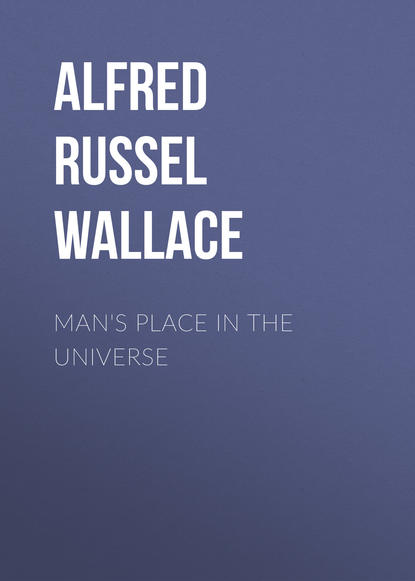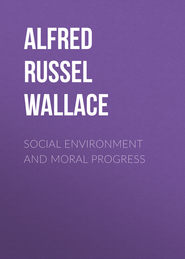По всем вопросам обращайтесь на: info@litportal.ru
(©) 2003-2024.
✖
Man's Place in the Universe
Автор
Год написания книги
2018
Настройки чтения
Размер шрифта
Высота строк
Поля
The Milky Way from URANOMETRIA ARGENTINA.
By SIDNEY WATERS
notes
1
In a letter to Knowledge, June 1903, Mr. W.H.T. Monck puts the same point in a mathematical form.
2
Outlines of Astronomy, pp. 578-9. In the passages quoted the italics are Sir John Herschel's.
3
Mr. J.E. Gore in Concise Knowledge Astronomy, pp. 541-2.
4
Nature, October 26, 1899.
5
The System of the Stars, p. 385.
6
This account of Professor Kapteyn's research is taken from an article by Miss A.M. Clerke in Knowledge, April 1893.
7
The Stars, p. 256. The region here referred to is that where the Milky Way has its greatest width (though nearly as wide in the part exactly opposite), and where it may perhaps extend somewhat in our direction. Miss A.M. Clerke informs me that in April 1901 Kapteyn withdrew the conclusions arrived at in 1893, as being founded on illegitimate reasoning as to the relation of parallaxes to proper motions. But as this relation is still accepted, under certain limitations, by Professor Newcomb and other astronomers, who have arrived independently at very similar results, it seems not improbable that, after all, Professor Kapteyn's conclusions may not require very much modification. Professor Newcomb also tells us (The Stars, p. 214, footnote) that he has seen the latest of Professor Kapteyn's papers, down to 1901; but he does not therefore express any doubt as to his own conclusions as here referred to.
8
See Knowledge and The Fortnightly Review of April 1903.
9
Sir R. Ball in an article in Good Words (April 1903) says that luminosity is an exceptional phenomenon in nature, and that luminous stars are but the glow-worms and fire-flies of the universe, as compared with the myriads of other animals.
10
The Astrophysical Journal, vol. xiv., July 1901, p. 17.
11
Professor F.J. Allen: What is Life?
12
Art. 'Vegetable Physiology' in Chambers's Encyclopædia.
13
Address to the British Association1902, Section Physiology.
14
This enumeration of the elements that enter into the structure of plants and animals is taken from Professor F.J. Allen's paper already referred to.
15
Early History of Mankind 2nd ed. p. 227.
16
For a fuller account of this Arctic fauna and flora see the works of Sir C. Lyell, Sir A. Geikie, and other geologists. A full summary of it is also given in the author's Island Life.
17
Professor G.H. Darwin states that it is nearly certain that no other satellite nor any of the planets originated in the same way as the moon.
18
Transactions of Royal Dublin Society, vol. vi. (ser. ii.), part xiii. 'Of Atmospheres upon Planets and Satellites.' By G. Johnstone Stoney, F.R.S., etc. etc.
19
Knowledge, June 1903.
20
M. Camille Flammarion, in Knowledge, June 1903.
21
The Worlds of Space, by J.E. Gore, chapter iii.
22
The Fortnightly Review, April 1903, p. 60.
23
Since writing this chapter I have seen a paper by Luigi d'Auria dealing mathematically with 'Stellar Motion, etc.,' and am pleased to see that, from quite different considerations, he has found it necessary to place the solar system at a distance from the centre not very much more remote than the position I have given it. He says: 'We have good reasons to suppose that the solar system is rather near the centre of the Milky Way, and as this centre would, according to our hypothesis, coincide with the centre of the Universe, the distance of 159 light years assumed is not too great, nor can it be very much smaller.'—Journal of the Franklin Institute, March 1903.











